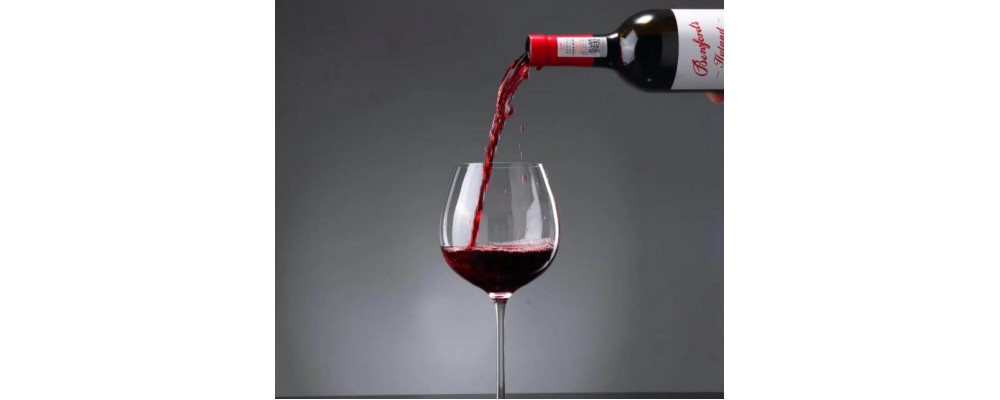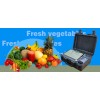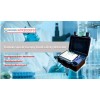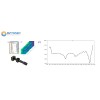Your shopping cart is empty!
Fluorescence Spectroscopy Enhances Premium Wine Production
Technology supports premium wine production,this article introduces how fluorescence spectroscopy enhances premium wine production.
Introduction
Rich and full-bodied, clear and sweet, with a lingering finish—these desirable qualities in wine are shaped by different wine production methods (relative product word) that impart unique colors and flavors. These enticing characteristics are not merely coincidental but are the result of a complex combination of phenolic compounds formed during the wine fermentation process. In the past, the levels of these phenolic compounds were entirely dependent on nature's gifts. Today, however, technological advancements allow winemakers to control the specific parameters of grapes, enabling the production of wines with diverse qualities and consistent flavors. Nevertheless, this process is challenging and costly.In the crafting of premium wines (industry, hot word), fluorescence spectroscopy (technical trend, long-tail word) is playing a crucial role by providing winemakers with an unprecedentedly precise analytical tool. The application of this technology has elevated wine quality control (applications, hot word) and flavor optimization to new heights.

Fluorescence Spectroscopy in Wine Production
Fluorescence spectroscopy utilizes the phenomenon of fluorescence to detect and analyze various chemical components in wine. During the winemaking process, particularly in the fermentation and aging stages, chemical reactions produce several key compounds, such as phenolic substances, aromatic compounds, and pigments. These compounds directly influence the wine's flavor, color, and mouthfeel. Traditional analytical methods, however, are often time-consuming, labor-intensive, and lack precision.With fluorescence spectroscopy, winemakers can monitor changes in these compounds in real-time. Specifically, when a wine sample is exposed to light at a particular wavelength, the compounds in the sample absorb the light energy and emit a specific fluorescence signal. The fluorescence spectrometer (relative product word) captures these signals and converts them into data, providing detailed information about the concentration and distribution of the compounds. This allows winemakers to precisely monitor changes during fermentation and adjust production parameters to optimize wine flavor and quality.The introduction of fluorescence spectroscopy has not only increased the accuracy of the wine production process but also enabled winemakers to master the flavor and characteristics of wine at a higher level. This technology ensures that every bottle of wine can showcase the perfect blend of science and art.How Fluorescence Spectroscopy Enhances Wine ProductionFor example, fluorescence spectroscopy can help winemakers detect the phenolic content in wine, which significantly affects its taste and color. If a batch of wine has a high phenolic content, winemakers can adjust the fermentation temperature or shorten the maceration time to control the release of phenolic compounds, ensuring a balanced and harmonious final product.Moreover, this technology can also monitor the oxidative state of the wine. Oxidation can cause wine to lose its freshness and complexity. Through fluorescence spectroscopy analysis, winemakers can detect early signs of oxidation and take measures, such as adjusting storage conditions or adding antioxidants, to maintain the wine's quality.
Challenges Faced by Wineries
- Problems with Traditional Detection Methods: Traditional gas chromatography and liquid chromatography-mass spectrometry (technical trend) methods are relatively slow.
- Overworked Staff: Employees must perform comprehensive and scientific characterizations of grape phenolic content, pH levels, sugar levels, and other critical parameters.
- High Costs and Technical Complexity: Testing a single grape sample can cost up to $200, and these devices pose technical challenges to users regarding calibration systems, maintenance, and instrument transfer.

Fluorescence Spectroscopy Drives Technological Innovation in Wineries
In the realm of modern wine production (industry, hot word), fluorescence spectroscopy technology (technical trend, long-tail word) is emerging as a key force driving technological innovation. As a highly precise analytical tool, fluorescence spectroscopy provides powerful support for wineries seeking technological advancement through its unique capabilities.The ATF4500 fluorescence spectrometer (relative product word) stands out with three major advantages: High-speed scanning, low stray light, and high sensitivity. These features effectively address the current challenges faced by wineries and pave the way for new technological innovations in the wine industry.
- Rapid Detection: With a scanning speed of up to 60,000 nm/min, the ATF4500 can complete a full three-dimensional fluorescence spectrum scan in just 1-2 minutes (applications, hot word).
- Low Detection Costs: Fluorescence detection is cost-effective and non-destructive to samples. The ATF4500 offers high automation, simplicity of operation, and user-friendly functionality.
- Accurate Data: With a sensitivity of S/N > 800 (RMS) at the water Raman peak and a detection limit as low as 1×10^-13 mol/L of fluorescein, the ATF4500 ensures precise results (technical trend).
Industry Outlook
Looking to the future, fluorescence spectroscopy technology will continue to lead the wine industry to higher levels of technological sophistication. With ongoing advancements and deeper applications of this technology, winemakers will be able to more accurately decode the complex flavors and components of wine, creating more unique and premium products. We may soon see more data-driven innovations (long-tail word), such as personalized customization and real-time optimization of winemaking processes. This not only enhances the overall quality of wine but also provides consumers with a richer and more impressive tasting experience. The fusion of technological progress and traditional craftsmanship fills us with anticipation for the future of wine, welcoming more unforgettable moments of exquisite aromas.
Search
Categories
Popular Posts
Latest Posts























Comments: 0
No comments